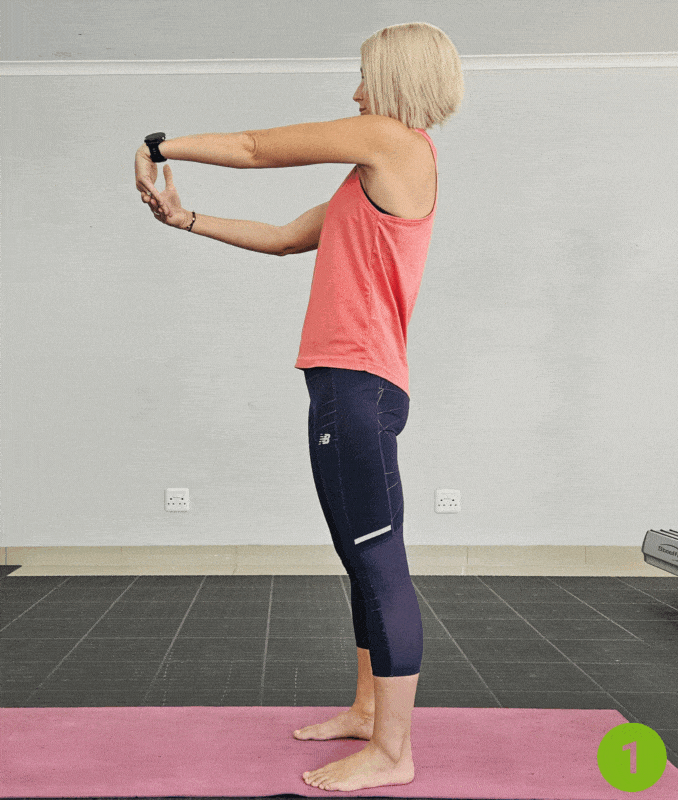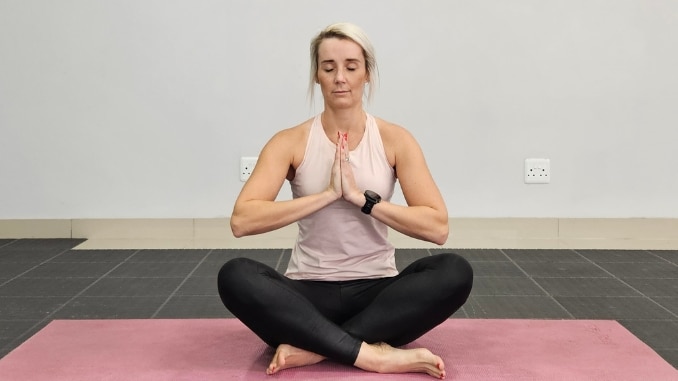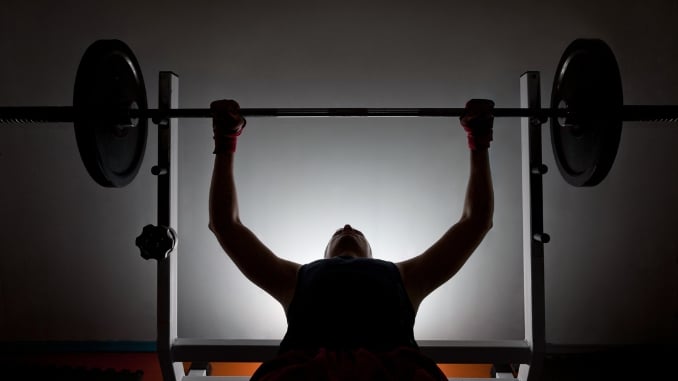Wrist pain during the bench press is more common than you might think and can stop your progress in its tracks. If your wrists hurt or shake during lifts, it might be a sign of poor form, muscle fatigue, or overloading. But don’t worry!
With a few simple changes to your routine and some helpful wrist pain exercises from benching, you can tackle that wrist pain head-on and keep pressing forward. Discover effective solutions to prevent and relieve wrist pain, and get back to lifting safely and pain-free!
Here are some simple wrist exercises you can do after a workout to help avoid pain:
1. Wrist Flexor Stretch

- For this exercise to avoid wrist pain from benching, begin in an upright standing position with your feet hip-width apart.
- Maintain good alignment with your head, shoulders, hips, and legs.
- Extend one arm in front at chest level, palm facing down.
- Engage your core muscles.
- With your opposite hand, gently pull your fingers downward until you feel a comfortable stretch in your forearm.
- Hold the position for 30 seconds.
- Relax and repeat the movement on the other side.
2. Wrist Circles
- Begin in an upright standing position with your feet hip-width apart and maintain good alignment with your head, shoulders, hips, and legs.
- Extend your arms in front at chest level.
- Engage your core muscles.
- Slowly rotate your wrists in smooth, controlled circles—first clockwise, then counterclockwise—keeping your arms steady.
- Perform 10 circles in each direction.
3. Prayer Stretch

- Begin in an upright sitting position on the floor with your legs crossed.
- Maintain good alignment with your head, shoulders, and hips.
- Press your palms together at chest level in a prayer position.
- Hold the position for several deep belly breaths, in through your nose and out through your mouth.
To intensify the movement, rotate your hands down with the fingers pointing towards your abdomen while keeping your palm pressed together.
Wrist Pain During Bench Press
According to chiropractors and physical therapists, many people experience wrist pain while bench pressing. This can be due to poor grip and instability during the lift, which causes energy leakage and affects performance. Some individuals even miss lifts or feel the weight is unstable due to wrist discomfort.
If your wrist shakes [1] a lot during exercises like the bench press, it could be a sign of muscle fatigue or poor form. If you feel pain in your wrist, it’s worth checking if you’re using the right technique or overloading the muscles too much.
Bench Press with Proper Form and Grip

- Begin by lying flat on a bench with your feet firmly planted on the floor.
- Ensure your head, shoulders, and hips are aligned.
- Reach up to grip the barbell with both hands, keeping them shoulder-width apart or slightly wider, depending on your preference.
- Engage your core and press your shoulders down into the bench.
- Slowly lower the barbell to your chest, ensuring your elbows stay at about a 45-degree angle to your body.
- Keep your wrists straight and your grip firm throughout the movement.
- Press the barbell back up to the starting position, fully extending your arms without locking your elbows.
- Repeat the movement for the desired number of repetitions.
How to Prevent Wrist Pain When Bench Pressing

To prevent wrist pain from benching, try these tips:
- Maintain Proper Grip: Keep your wrists straight, not bent. Your grip should be firm but not too tight.
- Use Wrist Wraps: Wear wrist wraps for added support, especially when lifting heavy weights.
- Check Your Form: Ensure your elbows are not flaring too wide, and the bar is aligned with your wrists, not resting on them.
- Warm Up: Warm up your wrists and forearms with stretches or light weights before bench pressing.
- Strengthen Your Wrists: Perform wrist-strengthening exercises regularly to improve wrist stability.
- Reduce Weight if Necessary: Avoid using weights that are too heavy and causing discomfort. Gradually increase the weight as your wrists get stronger.
Causes of Wrist Pain When Bench Pressing
Wrist pain during bench pressing can be caused by:
- Bent wrists or wrong hand position stress the joint.
- Lack of strength causes instability during exercises.
- Repeated bench pressing without rest leads to muscle strain.
- Poor bar placement adds pressure on the wrists.
- Tight forearm muscles limit wrist mobility and flexibility.
- Past injuries make wrists more prone to further pain.
- Lifting too much weight places strain on the wrists.
- Skipping warm-up leads to stiffness and joint discomfort.
Proper Form and Technique for Bench Press

- Using the right grip [2], scapula position, and force direction during the bench press can help prevent wrist pain.
- Maintaining proper form is essential for reducing wrist strain during the bench press.
- Focus on three aspects of technique to protect your wrists: bar placement, wrist position, and chest muscle engagement.
- A neutral wrist position is crucial for evenly distributing the load and preventing excessive stress on the wrists.
- Proper grip width is essential for avoiding wrist pain and injury.
- Foot positioning and leg drive contribute to stability and power; feet should be firmly planted and actively pressing into the floor.
- Keep your elbows at a 45-degree angle to avoid excessive strain on the shoulders and wrists.
- Proper breathing is key: inhale while lowering the bar and exhale while pressing it up to maintain stability and strength.
Getting Back on Track
With proper form, technique, and strengthening exercises, you can get back on track with your fitness goals and prevent wrist pain. Remember to prioritize safety and proper form, and don’t push through pain or discomfort. By taking care of your wrists and addressing any underlying issues, you can enjoy a healthy and effective bench press workout.
Unlock a life free from chronic pain with The Pain Hacker DVD! Dive into proven techniques that empower you to take control and live pain-free. Don’t let pain dictate your life—take action now and reclaim your health. Order your copy today and start your journey to lasting relief!
Frequently Asked Questions
Are Wrist Wraps Good for Bench Press?
Yes, wrist wraps are helpful for bench pressing. They provide support, prevent excessive wrist bending, and improve grip, especially when lifting heavy. However, they shouldn’t replace building wrist strength and using proper technique.
How to get rid of wrist pain from benching?
- Rest your wrist and avoid exercises that cause pain.
- Apply ice for 15–20 minutes to reduce swelling.
- Check your form to ensure you’re not bending your wrist too much.
- Gradually strengthen your wrist with exercises.
- Stretch your wrists and forearms for better flexibility.
- Use wrist wraps for added support while lifting heavy weights.
- See a doctor if the pain doesn’t go away.
Which Bench Press Causes More Muscle Activity: Free Weights or Machines?
Free-weight bench presses [3] generally cause more muscle activity than machine bench presses. This is because free weights engage more stabilizing muscles, including the wrist joint, which requires additional control during the lift. Machines, on the other hand, provide more support, which may reduce overall muscle activation.


